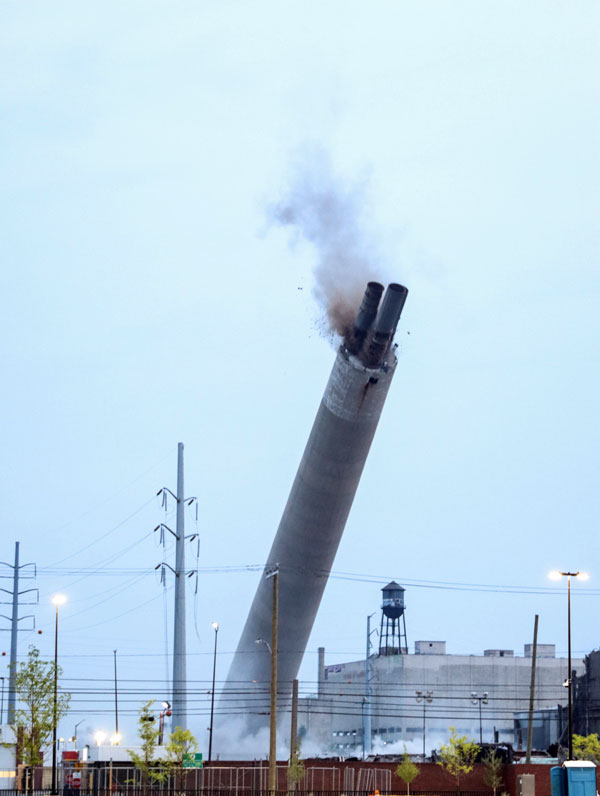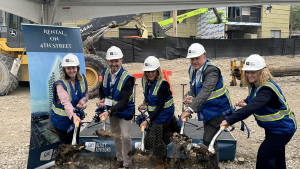The Detroit solid waste-to-energy incinerator, long a source of irritation to neighbors and environmentalists almost from the day it opened in 1989, has finally been torn down.
When it opened it was the largest solid waste incinerator in the world with its 333-foot stack that could be seen from miles around among the low-rise inner-city neighborhoods that surrounded it.
The stack was actually the last of several buildings on the City of Detroit-owned site to succumb to the wrecking ball or be rehabbed, but in this case a controlled implosion took place early on a Sunday morning.
The facility opened in 1989 at a cost of $500 million with considerable fanfare as a new way to dispose of the city’s trash instead of taking up room at landfills.
Ironically, since closing in 2019, that’s exactly where trash is now trucked to. Operated by the Greater Detroit Resource Recovery Authority (GDRRA), it burned up to 5,000 tons a day.
But even the city acknowledged the incinerator was a major irritant.
“Detroit’s long-despised incinerator – a source air pollution and health concerns for 30 years in surrounding neighborhoods – soon will be erased from the city’s skyline,” it said in a description.
Residents complained for decades about the odors and emissions emanating from the plant. Even Canadians across the river in Windsor, almost six miles away, sought to shut it down.
And in the last five years of operation the facility exceeded state emission standards a whopping 750 times.

The controversial plant also became a symbol of an environmental double standard when it came to race in Detroit, an overwhelming Black majority city.
“The presence of this incinerator has been a real pain point for this community because it was another example of a health hazard being placed in a lower income community of color,” Detroit Mayor Mike Duggan said.
Detroit’s building department director Tyrone Clifton said the demo brings to an end longstanding grievances.
“It was important to that neighbourhood,” he told the Daily Commercial News. “For years they’ve been dealing with something that has caused them discomfort and we want to be a part of the solution.”
Overall demolition work has been ongoing for about a year.
Initial work consisted of removing metal and other marketable materials before active demolition of the seven-acre complex’s processing facility section.
The contractor is Michigan-based Homrich, which does nationwide work.
“A lot of that has to do with how we demolish,” Clifton said. “So we’re deconstructing it, ferrous and non-ferrous materials, a lot of steel is there that we can salvage.”
The $1.3 million sale proceeds will return to GDRRA so the demolition cost is a wash.
The company that carried out the stack implosion was Dykon Explosive Demolition of Oklahoma, which has wide experience in tower demolitions.
The implosion took place just before 6 a.m.
Clifton called it “controlled felling” with the stack, with three chimneys, falling, like “a large tree,” in a westerly direction away from the closest residential area.
“The inside of the stack is remediated, there’s no residue from ash that’s left, and everything has been tested. There’s no asbestos-containing materials,” he said.
The full clean-up should be complete by August.
The city hasn’t determined yet what to do with the facility site.
“Maybe we’ll expand the city service yard to the north or maybe we’ll do something else with it — it hasn’t been decided,” Clifton said.











Recent Comments